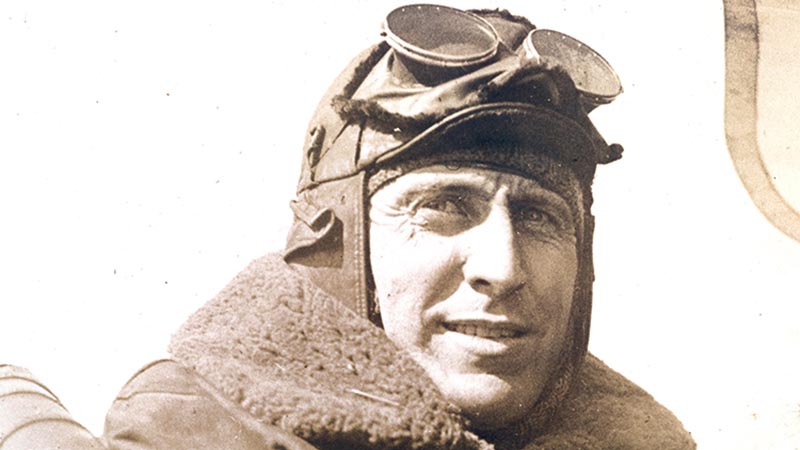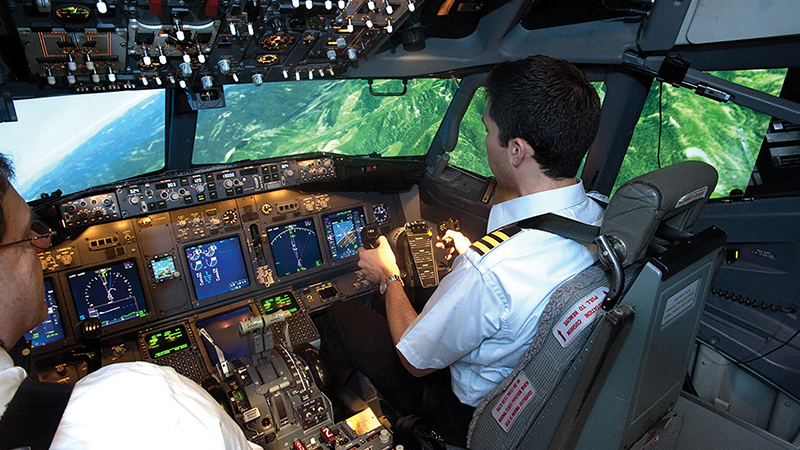Stay Up to Date
Submit your email address to receive the latest industry and Aerospace America news.
Technical advances are not always a pilot’s friend
Robert J. Stewart, a former aeronautical engineer and pilot examiner, warns that certain kinds of air crashes will persist if more attention is not given to old-fashioned hand-flying skills.
The FAA’s newly updated requirements for pilot certification — the Airman Certification Standards — represent a renewed emphasis on aeronautical decision-making while acknowledging advancements in avionics technology. All FAA-certified pilots, including those trained by the U.S. military, must obtain the proper FAA certificate, using the revised standards, whether flying a Cessna or an airliner.
The ACS published last June provide a useful integrated method for students and instructors by eliminating irrelevancy in training and testing for private and instrument pilots flying small planes. I was pleased to serve on the FAA’s Airman Certification System working group that advised the agency on the standards. Next, the ACS process for commercial, flight instructor and airline transport pilots will be addressed.
As worthwhile as these updates are, we need to do even more to address the frustratingly persistent problem of air crashes due to pilot error in the general aviation and commercial transport arenas. This persistence has to do with shortcomings in pilot training and inadequately designed human-machine interfaces of the complex modern aircraft.
Let’s first look at how we got here.
Absent the torrent of data in today’s cockpits, the airmail pilot of the 1920s somehow managed to fly without succumbing to in-flight upset issues, in which the altitude or airspeed is outside the normal bounds. He was able to survive in those days of avionics-free “contact” flying through outstanding airmanship and skill.
So, why are many of today’s pilots more prone to error than those airmail pilots? I propose that it is in large part because of the introduction of the technically advanced aircraft that coincided with the concept that one should train in the same aircraft that you will ultimately be flying.
Many major flight schools, in order to produce pilots for airlines, started using the technically advanced aircraft training concept. We trained pilots to become managers of multifunction displays and autopilots. This coincided with the poor “human factors” design of the original glass cockpits in terms of automation and human-machine interface. In the early 2000s, the original glass primary flight display created a training problem. The glide slope needle was moved from the horizontal situation indicator to the attitude indicator. This reduced the glide slope needle to a small unpronounced tab that was also difficult to monitor from the instructor’s seat on the right. This particular human-machine-interface shortcoming persists today, and is but one example of questionable human factors design.
The analog flight instruments were replaced with digitized displays, reminiscent of an earlier version of tape displays tried on Beechcraft Bonanzas and subsequently dropped. A lot that’s good can be said for the analog or “steam gauge” displays where a glance at the clock position of the needle provides you with needed information without interpreting and internalizing a numeral. Although some of the manufacturers did recognize the shortcomings of the digitization of the displays and provided glass steam gauge displays, the new glass cockpits quickly evolved into an overload of information, much of which you really didn’t need, and required a pilot training system that concentrated on avionics management when we needed to be teaching basic flying skills. That partly explains where we are today.
Also, the airlines wisely employed scenario testing in the ongoing flight training that they require pilots to undertake through their careers. But this was offset by the introduction of the technically advanced aircraft to initial flight training. Instructors switched their emphasis from acquiring basic flying skills to an overemphasis on reacting to various scenarios. This shift involved de-emphasizing the fundamental stand-alone disciplines of aerodynamics, weather, aircraft systems and in-flight maneuvering.
If you doubt that a revised approach should be adopted for training, consider that in response to the February 2009 crash of Colgan Air Flight 3407 in Buffalo, New York, and the crash a few months later of Air France Flight 447 off Brazil, pilots were instructed to reduce the angle of attack for stall recovery. This resulted in the advent of upset prevention and recovery training by both general aviation and the airlines. This training is welcome, but the need for it was a troubling revelation that many pilots have lost or never acquired the skill to handle stalls.
The Air France crew did not recognize that they were in an aerodynamic stall and rode the airplane from 38,000 feet to the ocean surface in a stalled condition. Similarly, the Colgan crew may have confused a wing stall with a tailplane icing stall and applied the wrong control inputs for stall recovery.
A further threat to piloting skills in the small aircraft segment is the introduction of the ballistic recovery system, a parachute designed to bring the entire aircraft softly to the ground in an emergency. This technology originated with the structurally unsound ultralights, is currently in use and is reportedly being eyed for larger, privately flown planes. The recovery system turned out to be an effective marketing concept to attract new pilots, but it trades training in basic piloting skills and judgment and risk management, for hitting people on the ground with a falling airplane.
With proper training and an adequate human-machine interface, a pilot does not need a recovery system. Dedicated maneuver training in accuracy landings and ADM will prepare the pilot for all emergency landings short of the remote possibility of structural failure. Adoption of a ballistic recovery system violates the unwritten pilot’s creed of “don’t hurt anyone on the ground, don’t hurt your passengers, don’t hurt yourself and lastly don’t hurt your airplane,” in that order. The ballistic recovery system turns this on its head and does nothing for developing ADM and airmanship skills. I predict that the ballistic recovery system will go the way of the parachute flare for emergency off-airport night landings, because future aircraft designs will be aimed at a more experienced customer base. If there is any doubt about flying being a fine art form, one need only watch film of the late aerobatic pilot Al Williams flying his Grumman Gulfhawk, the late Bob Hoover flying his Shrike Commander or Chesley “Sully” Sullenberger’s “Miracle on the Hudson.”
Focus on basic airmanship skills
So, that is where we are and how we got there. More can be done. The solution to modern airplane crashes lies in improving the human-machine interface, ensuring that pilots acquire basic airmanship and ADM skills, and the proper training in the use of technology that the airmail pilot never had.
Flying schools and instructors are not doing aspiring pilots justice by putting them in sophisticated cockpits and teaching them how to push buttons and manage computers. Student pilots need basic flying skills to learn how to fly a plane before learning how to turn it over to a computer.
As a volunteer member of the Airman Certification System working group, I am pleased that it provides a detailed cross-referenced flying handbook coded to correlate with the knowledge and practical portions of the certification exam. Now we have to make sure new pilots are trained to fly the airplane, not the computer.
It is noteworthy that Boeing has announced it soon will offer the first touch screens in commercial airliners in response to customer demand, suggesting that Boeing thinks it has solved the problem of trying to use the screens in air turbulence. Can we learn from the past to improve our future? I think so.
As we obtain more technology and automation, instead of asking the question “is this doable?” and then proceeding to do it, we should be asking the question, “should we be doing it?” in terms of both technological aircraft design and how we train our pilots.★
"Flying schools and instructors are not doing aspiring pilots justice by putting them in sophisticated cockpits and teaching them how to push buttons and manage computers."
Robert J. Stewart, longtime aeronautical engineer, pilot, instructor and examiner
Related Posts
Stay Up to Date
Submit your email address to receive the latest industry and Aerospace America news.





